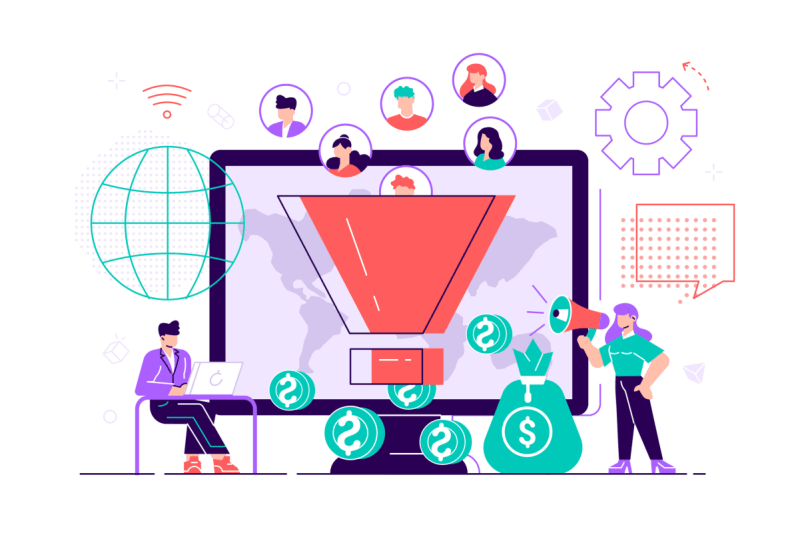Important Customer Retention Metrics to Look At

What Are Customer Retention Metrics?
Customers often return to a business, but can the likelihood be measured? Yes, it can, by variables we call customer retention metrics. These factors measure the chances of customers being retained by your business. They are routinely used in formulas to measure the performance of your business in a given period.
These metrics are essential in accomplishing sales targets and increasing customer loyalty. Strategic planning and crucial decision-making are based on these numbers. Exceptional customer lifetime value and an increase in retention cannot be achieved without customer retention metrics.
Sales, marketing, product development, management teams, and customer service departments derive benefits from customer retention metrics. This data helps all of these departments to streamline their contributions to the journey and experience of a customer.
How to Measure Customer Retention Over Time
Customer retention over time, or the customer retention rate (CRR), is measured using a formula which is as follows:
Customer Retention Rate = (Customers at the End of the Period) – (New Customers Acquired) / Customers at the Start of the Period.
Multiply the result by 100 to acquire the CRR.
For example, let’s assume your store caters to 520 clients at the end of the first quarter and has gained 45 new clients in this period, and the original number of clients was 500, then the CRR would = (520 clients at the end of quarter one) – (45 new clients acquired) / 500 clients at the start of the period.
0.95 is the answer. Multiply this by 100, and your CRR will be 95%.
Depending on the size of your organization, calculating your CRR every two, four, or six months should suffice.
8 Important Customer Retention Metrics to Pay Attention To
Out of the multiple metrics that exist, the ones to pay attention to for customer retention purposes are as follows:
Customer Churn Rate
This measures the rate at which customers stop doing business with you. Customers leaving a business is natural. If a company’s churn rate is 0%, it means that the company has very few (albeit very loyal) customers. This is problematic because one needs to keep growing its customer base, even if it means a few customers may be lost along the way.
Revenue Churn Rate
While the customer churn rate and the revenue churn rate are closely associated, the latter looks at the problem from a different vantage. This measures the monetary value of the customers who have stopped doing business with you. The revenue churn rate is the result of canceled orders or subscriptions.
Customer Retention Rate
This helps to understand customer loyalty and, thus, the performance of your business. It is the rate at which you have kept your customer pool attached to your company. This is a positive approach as it focuses on the customers who choose to stick around.
Existing Customer Revenue Growth Rate
This metric hints at the revenue generated from the existing customers through the efforts of your marketing and sales teams. A stagnant existing revenue growth rate is a bad sign for your business. Sincere efforts and budget (to retain the existing customers) are imperative for the continuous climb of this rate.
Repeat Purchase Ratio
This measure helps identify the customers who would like to shop again (get it?) with your company. This metric is also known as the repeat customer rate and repeat purchase rate. The general idea is that the higher the rate, the better it is for the company.
Days Sales Outstanding
DSO is used to calculate the number of days a company takes to receive payments after a sale or a service. Delay in payments leads to cash flow issues and shows the customer’s commitment to maintaining a healthy working relationship with your company. DSO can be checked with effective customer success and retention strategies.
Loyal Customer Rate
Loyal customers are crucial for the success of any business. More loyalty means more retention. It refers to the number of customers who have made a repeat purchase with your company in a specific period of time. It encourages customer advocacy. Being valuable to your customer base, they can help you gather testimonials and drive referrals.
Customer Lifetime Value
This metric measures the revenue generated by a single customer and thus helps track consistency. Staggering CLV indicates that your business has low-value customers or that the customers are not willing to shop with you anymore. CLV should ideally be on the rise or at least, stay consistent.
Improve Your Customer Retention Metric With ShopAgain
ShopAgain offers AI-powered customer retention campaigns over email, SMS, and WhatsApp. These strategies, coupled with its Audience Sync for Ads feature, are your one-stop shop for all things customer retention.
If up to a 25% increase in revenue through retention is what you seek, avail of ShopAgain’s 14-day free trial now.
Frequently Answered Questions
What are good customer retention metrics for eCommerce?
Realistically, a good retention rate for eCommerce brands is between 30% and 40%. This applies to a period of 8 weeks.
How do you improve client retention?
Focusing on retention metrics like customer churn rate, revenue churn rate, customer lifetime value and customer retention rate amongst others are essential in accomplishing sales targets and increasing customer loyalty.